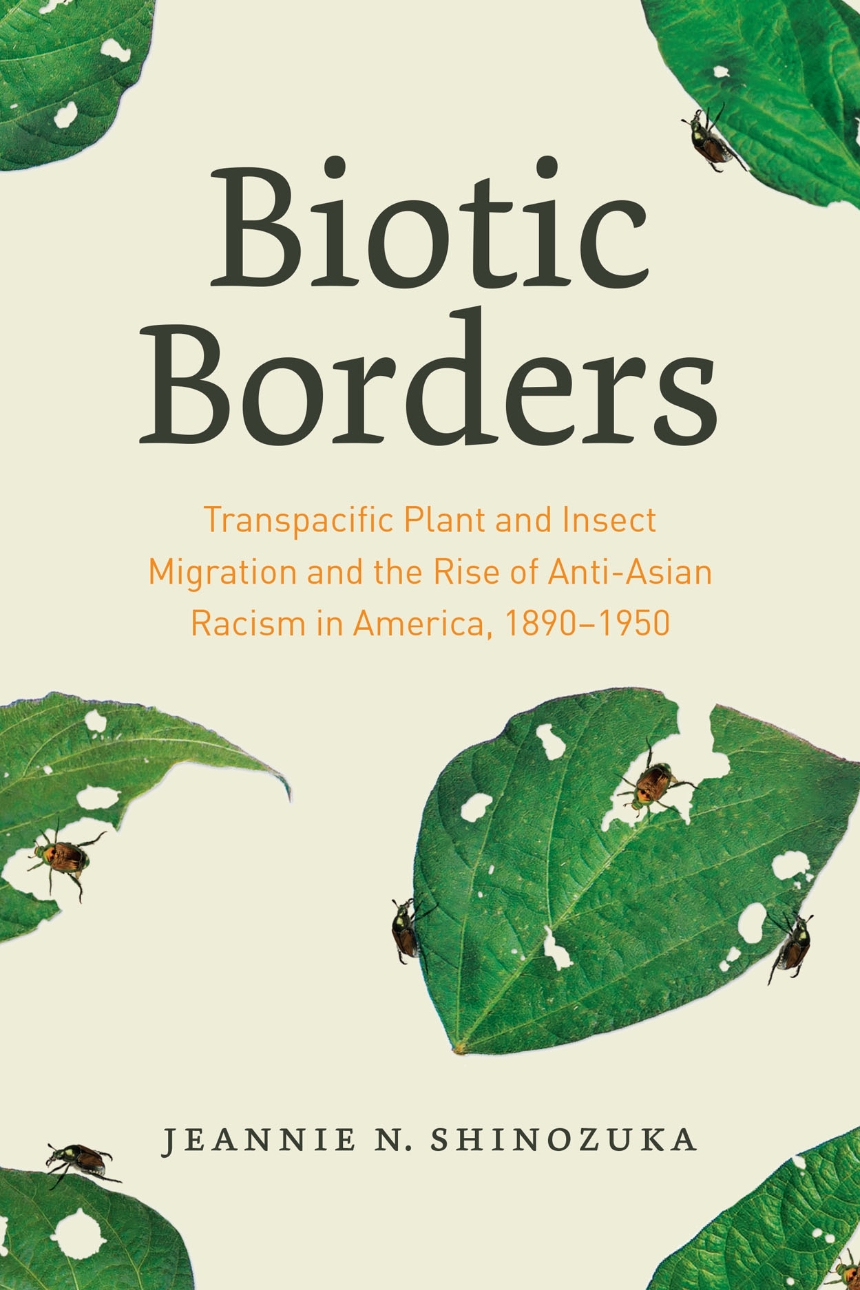Biotic Borders
Transpacific Plant and Insect Migration and the Rise of Anti-Asian Racism in America, 1890–1950
Biotic Borders
Transpacific Plant and Insect Migration and the Rise of Anti-Asian Racism in America, 1890–1950
Publication supported by the Bevington Fund
In the late nineteenth century, increasing traffic of transpacific plants, insects, and peoples raised fears of a "biological yellow peril" when nursery stock and other agricultural products shipped from Japan to meet the growing demand for exotics in the United States. Over the next fifty years, these crossings transformed conceptions of race and migration, played a central role in the establishment of the US empire and its government agencies, and shaped the fields of horticulture, invasion biology, entomology, and plant pathology. In Biotic Borders, Jeannie N. Shinozuka uncovers the emergence of biological nativism that fueled American imperialism and spurred anti-Asian racism that remains with us today.
Shinozuka provides an eye-opening look at biotic exchanges that not only altered the lives of Japanese in America but transformed American society more broadly. She shows how the modern fixation on panic about foreign species created a linguistic and conceptual arsenal for anti-immigration movements that flourished in the early twentieth century. Xenophobia inspired concerns about biodiversity, prompting new categories of “native” and “invasive” species that defined groups as bio-invasions to be regulated—or annihilated. By highlighting these connections, Shinozuka shows us that this story cannot be told about humans alone—the plants and animals that crossed with them were central to Japanese American and Asian American history. The rise of economic entomology and plant pathology in concert with public health and anti-immigration movements demonstrate these entangled histories of xenophobia, racism, and species invasions.
296 pages | 17 halftones | 6 x 9 | © 2022
Asian Studies: General Asian Studies
Geography: Environmental Geography
History: Asian History, Environmental History
Reviews
Table of Contents
1 San José Scale: Contested Origins at the Turn of the Century
2 Early Yellow Peril vs. Western Menace: Chestnut Blight, Citrus Canker, and PQN 37
3 Liable Insects at the US-Mexico Border
4 Contagious Yellow Peril: Diseased Bodies and the Threat of Little Brown Men
5 Pestilence in Paradise: Invasives in Hawai‘i
6 Japanese Beetle Menace: Discovery of the Beetle
7 Infiltrating Perils: A Race against Ownership, Contamination, and Miscegenation
8 Yellow Peril No More? National and Naturalized Enemies during World War II
Conclusion: Toward a Multi(horti)cultural Global Society
Acknowledgments
Notes
Bibliography
Index
Awards
Association for Asian American Studies (AAAS): AAAS Book Award in Multidisciplinary or Interdisciplinary Approaches
Honorable Mention
Organization of American Historians: Frederick Jackson Turner Award
Honorable Mention
International Convention of Asia Scholars: ICAS Book Prize-Humanities
Shortlist
Forum for the History of Science in America: Philip J. Pauly Book Prize
Won
